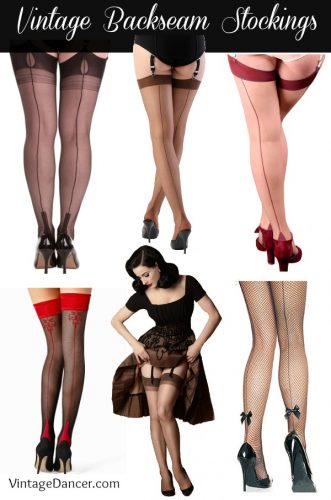A 1950s wardrobe would be incomplete without classic vintage seamed stockings, also simply known as nylons. Of all the mid-century decades, I love 1950s stockings the best. The adorable heel and ankle designs are so fun! Read on to learn more about 1950s nylons:
1950s Stockings or Nylons?
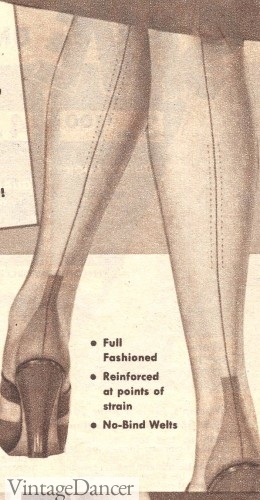
1955 Basic Seamed Nylons with Cuban Heel
In 1954, women purchased an average of 12 stockings a year to the total cost of $9. Nylon was being used so much over silk to make stockings that ‘nylons’ became synonymous with stockings, and remains so to this day. 1950s stockings were still held up with garters, which were attached to the bottom of girdles. Reinforced holes at the back and front of the stocking made clipping garters into place more secure than past decades. Knee high stockings with elasticized tops were a garter-less option, although they did tend to fall down if the fit was not perfect.
1950s nylons came in various types of sheerness and weight. They were identified by the “gauge” of the knit, meaning how tight the threads were knit together and “denier,” the weight of the nylon. The higher the gauge and lower the denier, the more sheer, more see through, and more prone to snagging they were. A 60 gauge nylon with 12 denier was quite sheer while a 50 gauge nylon with 15 denier was durable and somewhat more like tights are today. Nearly all nylons had reinforced toes, foot, and heel to provide strength and durability.
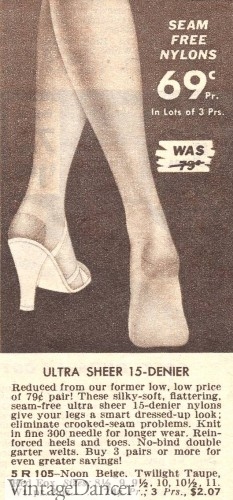
1955 Seamless Sheer Stockings
Although seamless circular knit stockings were manufactured, too, most women continued to wear stockings with a seam up the back. Seamless 1950s stockings looked too much like bare legs, and the seam-free version took a long time to take off. They were most often worn for special occasions in an ultra sheer gauge.
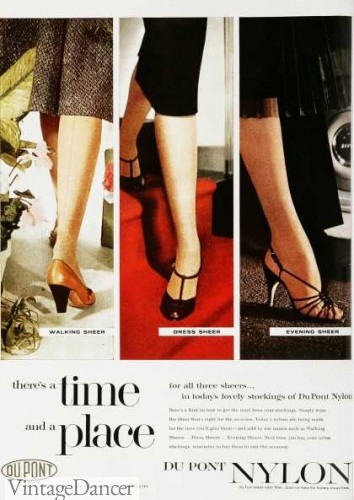
1950s Sheer Nylons
Most 1950s stockings were fully fashioned, meaning they were knit into the shape of a leg rather than as a stretchy tube like they are today. Held up by garter belts or girdles, nylons were sized to fit by the size of the foot. They didn’t always fit the shape of the leg, and girls had to constantly run to the ladies’ room to fix sagging nylons and straighten back seams. Lane Bryant developed plus size stockings with wide calves to accommodate not just stout women, but those with naturally stout legs (like me!).
By the end of the decade, circular knit seamless stockings were gaining popularity as well as “stretch” nylons. Both needed an aggressive marketing campaign to educate retailers and consumers on the better fit quality of circular knit stockings.
Unlike 1940s stockings, 1950s seams were often black regardless of body tone. The forties wanted a subtle seam, while the 1950s embraced the visible seam. Both skin tone and black seams were equally popular in the 1950s. Stockings that were worn during the day were usually the color of skin or a couple shades darker for a tanned look (or to hide unsightly leg hair). Nude, beige, taupe, bronze were all common names of nylon colors.
For evening fashion women often choose stockings to match the dress. Pastel shades for pastel gowns, black for black gowns, etc. Having matching shoes, stockings and dress looked expensive said Woman’s Own magazine in 1954.
In summer, when it felt too warm to wear stockings, many women went without. Socks were a nice alternative, although most women in summer wore flats and sandals without socks. This was fine for casual clothing, but fancier needs required a good old suntan to fool potential onlookers. Read more about the history of women’s socks here.
1950s Fancy Heels
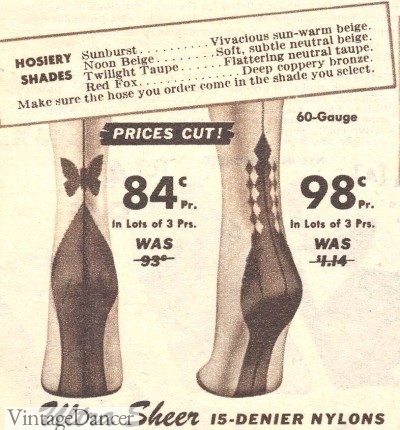
1955 Decorative Heel Stockings
An exciting part of wearing 1950s stockings were the heels. Often reinforced to help prevent runs and tears, the heels of your nylons were something to pay attention to. Sometimes called “personality heels” they were detailed and sexy and added a little personality to the outfit.
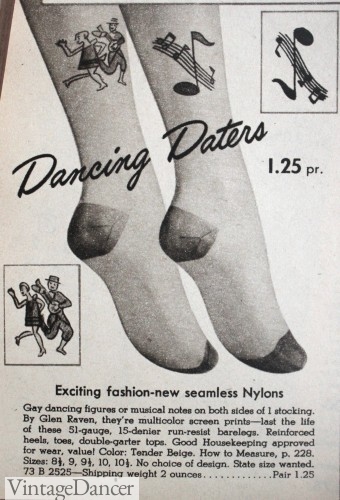
1951 Music and Dance Motifs
A plain heel stocking was a simple Cuban heel where the design was a squared off block just above the shoe line. Fancier heel types extended the design up the back of the leg, but usually no higher than low calf. Designs could be stitched in with black thread or “flocked” with a velvet-like dust pressed into the nylon. Most designs were geometric squares, points, arrows, checks, dots, lace, and double stripes that were often called Harlequin heels. A few fun designs for the youth embraced musical motifs, animals, butterflies, flowers, bows, and people. Often these were the same symbols popular on poodle skirts. The design was not limited to the back of the heel. A small design on the outside leg at or above the ankle was just as popular. It was also possible to order nylons with a monogram of initials.
Here are some examples of heel and ankle designs:
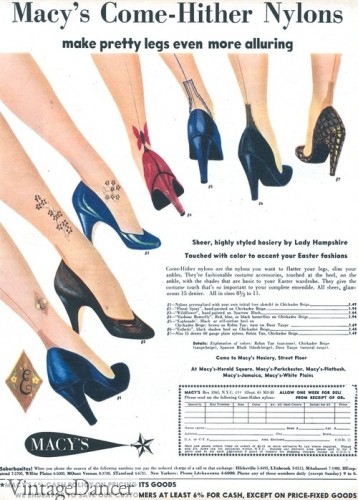
Stockings with Heel and Ankle Designs
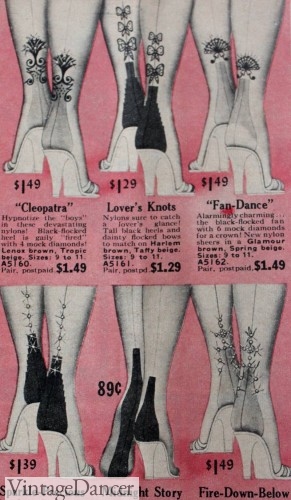
1958 Elaborate Heel Designs
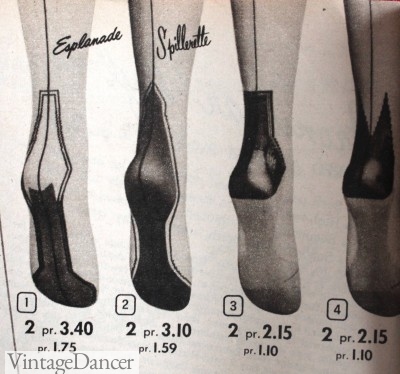
1951 “Esplande” Heels
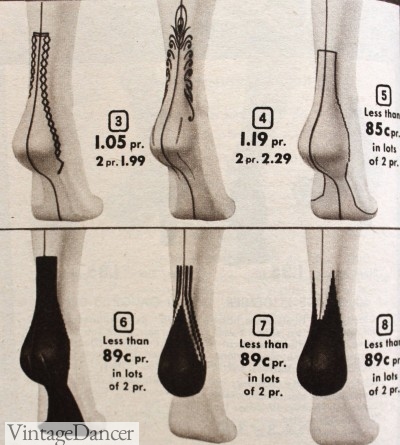
1950 Fancy and Plain Heels
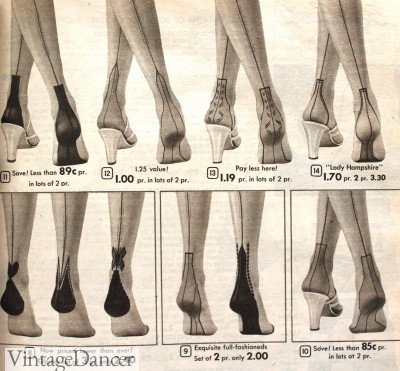
1950 Heels
How to Wear 1950s Stockings
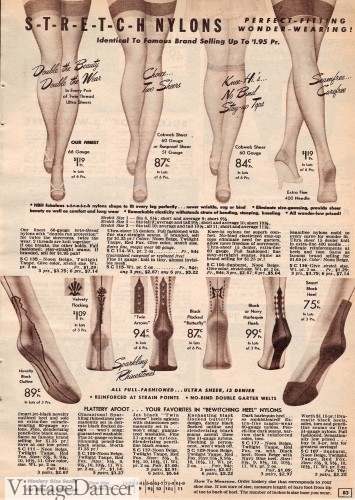
1957 Stockings for Sale
To ensure the durability of 1950s nylons and stockings, women would be wary of the length of their nails and sometimes even wore gloves while dressing in sheer stockings so as to make sure they didn’t snag them. It was recommended to roll the stocking down and gather it in their hands before sliding the foot in. Begin with the toes and unravel the stockings upward, making sure to center the foot and leg seams. Garters were often worn, and stockings should be the correct length so they meet the garter belt. Back garters should be fastened first and then the front at the reinforced hem to help avoid runs.
The type of shoe a woman wore determined if she were to wear stockings or socks. Pumps and heels always required stockings. If the heel design was fancy, an open back slip-on pump, heel or sandal was desirable. Even with a closed back shoe heel, the design would still be visible. The very popular black ballet flat required stockings, too. To wear them with socks was unacceptable. Saddle shoes and other low heel Oxfords were worn with bobby socks.
The Beats Wore Black
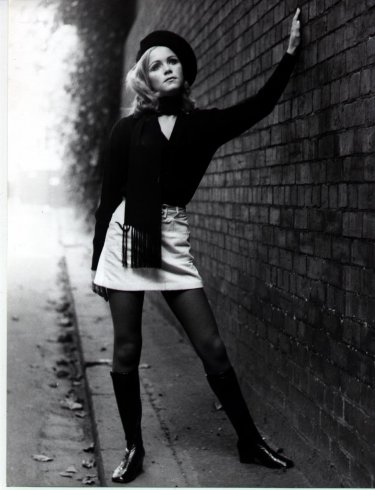
Beatnik Fashion with Black Stockings- 1960s
Rebellious Beatnik women developed a distinctly recognizable style in the 1950s and 1960s. They gave up trying to follow trendy fashion, opting instead for loose men’s shirts over slacks or faded jeans, and plaid skirts with black stockings. These very dark stockings had very little sheerness to them. In many cases, black leggings or snug fitting ankle pants were worn instead of stockings and were paired with a jersey shirt or loose sweater.
Diana Trilling, the wife of literary critic James Trilling, wrote after attending a poetry reading in 1959 at Columbia: ‘so many young girls, so few of them pretty, and so many dreadful black stockings.’
Needless to say, normal society did not appreciate the Beat style. None of my ’50s catalogs even offer black stockings for sale. It was clearly an underground anti-fashion movement.
Buying 1950s Style Stockings
Having worn vintage fully fashioned stockings, I can thankfully say I would prefer to wear stretch knit stockings any day! Fully fashioned, although authentic to the decade, are just hot and stiff and, for me at least, don’t fit well. Thankfully, most modern seamed stockings are circular stretch knit in either full pantyhose or thigh highs. While pantyhose were not worn in the 1950s, it doesn’t really matter if you decide to wear them under a dress (no one will know!).
























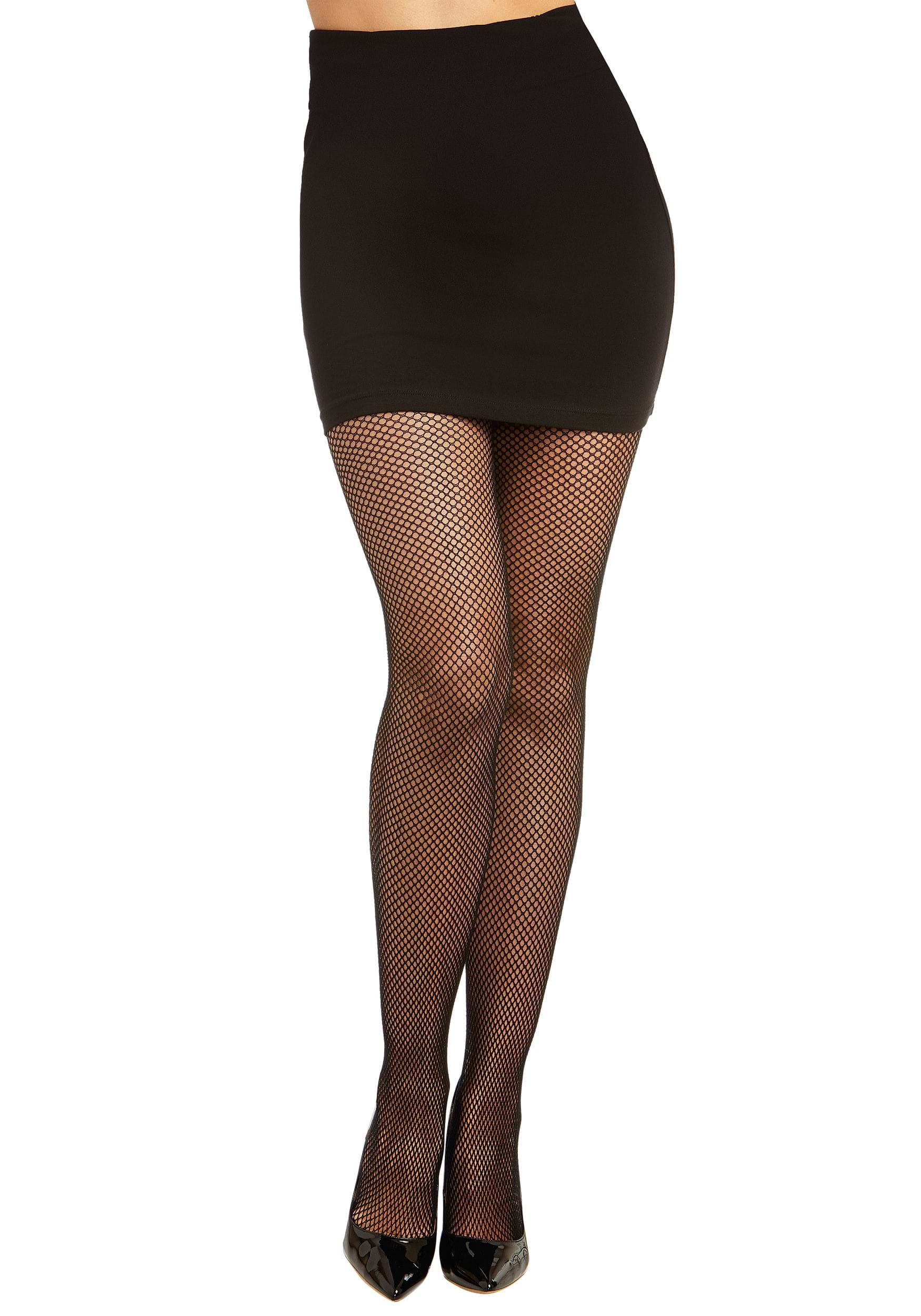









![1950s Stockings and Nylons History & Shopping Guide Pennac 20 Den Back Seamed Stockings [Garter belt not included] AT vintagedancer.com](https://images-na.ssl-images-amazon.com/images/I/410oP-rUP1L._AC_UL1000_.jpg)


















